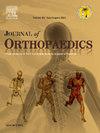Evaluating the learning curve and outcomes of a new rectangular femoral stem in total hip arthroplasty: A comparative study
IF 1.5
Q3 ORTHOPEDICS
引用次数: 0
Abstract
Background
Total hip arthroplasty (THA) is a widely successful procedure, but the adoption of new femoral stems is often met with hesitation due to concerns regarding a learning curve and potential complications. This study evaluates the impact of introducing a new rectangular femoral stem by comparing radiographic, clinical, and functional outcomes with those of an established metaphyseal loading stem.
Methods
A retrospective comparative study was conducted between January 2022 and January 2024. Patients were categorized into three groups: (1) control group receiving an established metaphyseal loading stem, (2) “learning curve” group (first half of patients receiving the new rectangular stem), and (3) “experienced” group (second half of patients receiving the rectangular stem). Primary outcomes included femoral stem subsidence and diaphyseal canal filling. Secondary outcomes comprised Oxford Hip Scores (OHS), EQ-5D-5L scores, length of hospital stay, complications, and readmission rates. Statistical analysis utilized ANOVA and chi-square tests, with significance set at p < 0.05.
Results
A total of 115 patients (33 control, 41 learning curve, 41 experienced) were included. No significant differences were found in demographics. Subsidence was comparable across groups (p = 0.381). AP canal filling showed no significant differences (p = 0.839), but lateral canal filling was greater in the rectangular stem groups (p<0.001). Functional outcomes (p = 0.646), complications (p = 0.318), and readmission rates (p = 0.402) were similar across groups. However, hospital stay was significantly shorter in the rectangular stem groups (p = 0.015).
Conclusion
The introduction of a new rectangular femoral stem did not result in a significant learning curve affecting subsidence, complications, or functional outcomes. The stem demonstrated improved lateral canal filling and was associated with reduced hospital stay, suggesting a safe transition to this design without compromising early outcomes.
评估全髋关节置换术中新型矩形股骨干的学习曲线和结果:一项比较研究
背景:全髋关节置换术(THA)是一种广泛成功的手术,但由于对学习曲线和潜在并发症的担忧,采用新的股骨干往往会遇到犹豫。本研究通过比较影像学、临床和功能结果来评估引入新型矩形股骨干与已有干骺端负荷骨干的影响。方法于2022年1月至2024年1月进行回顾性比较研究。患者被分为三组:(1)对照组接受已建立的干骺端加载柄,(2)“学习曲线”组(前一半患者接受新的矩形柄),(3)“经验”组(后一半患者接受矩形柄)。主要结果包括股骨干下沉和骨干管填充。次要结果包括牛津髋关节评分(OHS)、EQ-5D-5L评分、住院时间、并发症和再入院率。统计分析采用方差分析和卡方检验,显著性设置为p <;0.05.结果共纳入115例患者,其中对照组33例,学习曲线组41例,经验组41例。在人口统计学上没有发现显著差异。各组间沉降具有可比性(p = 0.381)。AP根管充填无显著性差异(p = 0.839),但矩形根管组侧根管充填较多(p = 0.001)。两组功能结局(p = 0.646)、并发症(p = 0.318)和再入院率(p = 0.402)相似。然而,矩形茎组的住院时间明显缩短(p = 0.015)。结论:引入新的矩形股骨干不会产生明显的学习曲线,影响沉降、并发症或功能结局。该支架改善了侧管填充,并减少了住院时间,这表明在不影响早期预后的情况下,可以安全过渡到这种设计。
本文章由计算机程序翻译,如有差异,请以英文原文为准。
求助全文
约1分钟内获得全文
求助全文
来源期刊

Journal of orthopaedics
ORTHOPEDICS-
CiteScore
3.50
自引率
6.70%
发文量
202
审稿时长
56 days
期刊介绍:
Journal of Orthopaedics aims to be a leading journal in orthopaedics and contribute towards the improvement of quality of orthopedic health care. The journal publishes original research work and review articles related to different aspects of orthopaedics including Arthroplasty, Arthroscopy, Sports Medicine, Trauma, Spine and Spinal deformities, Pediatric orthopaedics, limb reconstruction procedures, hand surgery, and orthopaedic oncology. It also publishes articles on continuing education, health-related information, case reports and letters to the editor. It is requested to note that the journal has an international readership and all submissions should be aimed at specifying something about the setting in which the work was conducted. Authors must also provide any specific reasons for the research and also provide an elaborate description of the results.
 求助内容:
求助内容: 应助结果提醒方式:
应助结果提醒方式:


